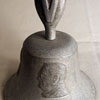Home | Homecoming | Victory!
Victory!
 Adolf Hitler committed suicide on April 30, 1945. His successor, Karl Dönitz authorized Germany’s unconditional surrender on May 7, 1945. This day became known as “Victory in Europe Day” or VE Day.
Adolf Hitler committed suicide on April 30, 1945. His successor, Karl Dönitz authorized Germany’s unconditional surrender on May 7, 1945. This day became known as “Victory in Europe Day” or VE Day.
The surrender documents were signed by the Chief of Staff of the German Armed Forces High Command Colonel General Alfred Jodl; Lieutenant General Walter Bedell, Chief of Staff for the Supreme Allied Commander Dwight D. Eisenhower of the United States; General Ivan Susloparov of Russia; and General François Seves of France. The German Instrument of Surrender stipulated that all active operations were to cease on May 8, 1945, 2,077 days after the beginning of the Second World War.
Upon hearing the news Canadian troops in Holland took part in celebrations at Utrecht and Amsterdam. News of Germany’s unconditional surrendered reached Canada (North America) on May 7th and was officially reported by the CBC shortly before 10:00pm. Throughout the day spontaneous celebrations broke out across the country.
Official celebrations included a parade on Parliament Hill and a ticker tape parade in Toronto. The Globe and Mail described the scene in the following manner:
[…] a tidal wave of enthusiasm that drowned out the Government's expressed desire to have VE-Day observed the day following the announcement of the unconditional surrender [sic] of Germany. Stores and office buildings closed down and the staffs rushed outside to merge with the singing, shouting crowds that marched down the middle of the business thoroughfares, heedless of the few automobiles and street cars that ventured their way.
 Unfortunately not all of the celebrations remained peaceful. Pent up emotions, combined with drunkenness and in some cases frustrations stemming from a lack of planning for celebrations and daily food shortages lead to rioting and violence. In Halifax local businesses closed so citizens could take part in the celebrations. Not everyone was supportive of this decision and thousands of sailors, soldiers, and civilians took it upon themselves to “liberate” any and all available liquor and beer. What began as a small number of nuisance break-ins in Halifax and nearby Dartmouth escalated into widespread looting, vandalism, and riots leaving three dead, hundreds of shops and businesses damaged and dozens of people in jail.
Unfortunately not all of the celebrations remained peaceful. Pent up emotions, combined with drunkenness and in some cases frustrations stemming from a lack of planning for celebrations and daily food shortages lead to rioting and violence. In Halifax local businesses closed so citizens could take part in the celebrations. Not everyone was supportive of this decision and thousands of sailors, soldiers, and civilians took it upon themselves to “liberate” any and all available liquor and beer. What began as a small number of nuisance break-ins in Halifax and nearby Dartmouth escalated into widespread looting, vandalism, and riots leaving three dead, hundreds of shops and businesses damaged and dozens of people in jail.
Despite the euphoria and victory celebrations world leaders - British Prime Minister Winston Churchill, US President Harry Truman, King George VI of England, and Canadian Prime Minister William Lyon Mackenzie King – delivered a somber warning: Japan had not yet been defeated or surrendered. The Second World War was not yet over.
Following Japan’s rejection of the Potsdam Declaration (July 29, 1945) the United States proceeded with the use of their newly developed nuclear weapon. The American’s bombed Hiroshima on August 6th and Nagasaki on August 9th. Japanese Emperor Hirohito relented on August 15th announcing his country’s acceptance of the Potsdam Declaration. The Japanese Emperor blamed the use of “a new and most cruel bomb” for Japan’s surrender.
The official terms of Japan’s surrender were signed aboard the USS Missouri on September 2, 1945. Japan was the last Axis power to be defeated and to surrender. British Prime Minister Clement Atlee announced, “The last of our enemies is laid low.”
US President Harry S. Truman thereby declared September 2, as the official “Victory Over Japan Day” or VJ Day. In the years to follow the war those who observed VJ Day did so on August 15th, the Day Hirohito announced Japan’s surrender.
Reference
The Globe and Mail, “Carnival of Joy Loosed As Toronto Celebrates European Victory News,” May 8, 1945.
Canadian War Museum. Democracy at War: Canadian Newspapers and the Second World War. (accessed October 17, 2007).
Canadian War Museum. “The Halifax VE Day Riots, 7–8 May 1945.” Democracy at War: Canadian Newspapers and the Second World War. (accessed October 17, 2007).
Canadian War Museum. “Victory 1945.” (accessed October 22, 2007).
CBC News Online. “Victory in Europe.” CBC News In Depth, May 6, 2005. (accessed October 17, 2007).
Veterans Affairs Canada. “Canada and the War in the Far East.” (accessed October 17, 2007).
Veterans Affairs Canada. “Victory 1945.” (accessed October 17, 2007).








